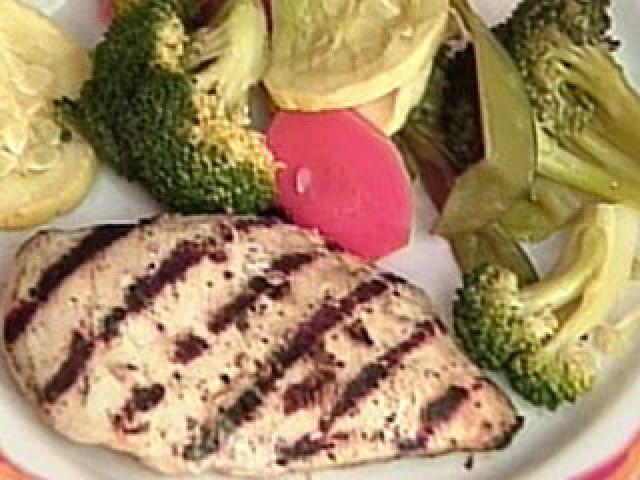Dining Out Done Right

CBN.com - Americans are dining out more than ever before. In the 1970s, about 36 percent of the average food budget was spent on food eaten away from home. Today the average consumer spends 48 percent of the food budget on eating out. According to the National Restaurant Association, the average adult buys a meal or snack from a restaurant 5.8 times per week.
Along with dining out more, we have seen a rise in obesity and a trend toward bigger restaurant portions over the past 15-20 years. Are the increases in eating out, obesity, and portion sizes related? You betcha!
What Research Shows
According to an article published in the Journal of the American Dietetic Association, larger portion sizes and eating too much fast food have both contributed to the prevalence of obesity in the United States. The research showed that women who ate more fast food meals had higher calorie and fat intake and more body fat.
A Temple University study showed that the more fast food meals per week people ate, the higher their BMIs and body weights. A study published in Obesity Research reported that "the frequency of consuming restaurant food was positively associated with increased body fatness in adults." Ouch!
Portion Distortion
Whether it's fast food or sit-down dining, the monstrous portions many restaurants serve can undermine anyone's best intentions for healthy eating. Research shows that when portion sizes are larger, most people tend to eat 30-50 percent more. And get this - whether fast food or sit-down, it's not unusual for a single restaurant meal to contain an entire day's worth of calories!
Years ago people ate out less often, so a high calorie restaurant meal once in a while wasn't a diet-breaker. But today almost half of Americans eat out each day, so large portions of high-fat, high-calorie food can spell disaster for weight control and overall health.
Restaurants Not the Bad Guys
Restaurants are in business to make money and to serve their clients. Many customers crave the super-sized fast food meals, so the establishments cater to them. The bottom line is that fast food combination meals sell better than salads or veggie burgers they offer. To their credit, most fast food restaurants continue to add new healthful items to their menus.
On the up side, the National Restaurant Association reports that three-fourths of American adults say they're trying to make more healthful choices at restaurants than they did two years ago. Some restaurants are stepping up to the plate by offering menu items that are smaller – in both portion size and price.
Eating Out is OK
Can eating out ever be good for your health? Of course! Keep in mind that restaurants don't make people fat. It's what people choose to eat that causes weight gain. Each customer has complete freedom to make healthy choices or not. Every person who eats at restaurants frequently is not overweight, so there are ways to eat out without overdoing it.
TEN TIPS for Dining Out:
1. Plan ahead. The vast array of menu items can be overwhelming and you may feel rushed to make a decision when ordering. Get a menu ahead of time or check the restaurant's Web site for online nutrition information. Then take your time choosing what to order. To search for restaurants in your area that provide healthy choices, go to www.healthydiningfinder.com. Nutrition information on menu items is also provided.
2. Don't drink your calories. Instead of soda, alcohol, or a milkshake, sip on a calorie-free beverage. Try coffee or unsweetened tea. Or ask your server for a tall glass of ice water with a lemon or lime wedge.
3. Skip the starters. It's easy to munch on hundreds of calories-worth of rolls, breadsticks, or tortilla chips. Tell the server not to bring these items and sip your calorie-free beverage until the meal arrives.
4. Know your entrée. If you're not sure what ingredients a dish contains, ask your server. Go for entrees that are baked, broiled, grilled, roasted, or steamed rather than creamed, breaded, sautéed, or fried.
5. Lighten up on sides. Instead of French fries, onion rings, or potatoes smothered in butter or gravy, order lower fat sides like tossed salad, vegetables, or broth-based soup.
6. Ask for sauces and dressings on the side. That way you're in control of the amount you eat. Use a spoon to drizzle dressing over your salad or sauce onto your entrée. A little goes a long way for adding flavor.
7. Go with half. Split a dinner entrée with a friend. Or box up half of your meal before you start eating and enjoy the rest for lunch the next day.
8. Skip buffets. Dining with an all-you-can-eat mentality just encourages gluttony. If you must attend a wedding or other event that includes a buffet, mentally divide your plate into four sections and fill it this way: 1/2= veggies, 1/4 = lean meat or fish, 1/4 = whole grain bread, pasta, rice, or potatoes. Don't go back for seconds.
9. Savor the experience. Eat slowly and enjoy each bite. Also keep in mind that eating out is not solely about food – it's about people and relationships and fun. It's about enjoying uninterrupted time with family and friends, which you can do just as easily over grilled chicken and salad instead of a half-pound burger and fries.
10. Speak up. Talk with the managers of restaurants you patronize. Tell them you want to see printed nutrition information for every menu item, not just the healthier entrees. Ask them to incorporate lower-fat entrees, sides, and appetizers into the regular menu.
Try one or more of these tips next time you eat at a restaurant. And remember – you are in control of what you order and how much of it you eat. You CAN dine out without pigging out. Bon appétit!
